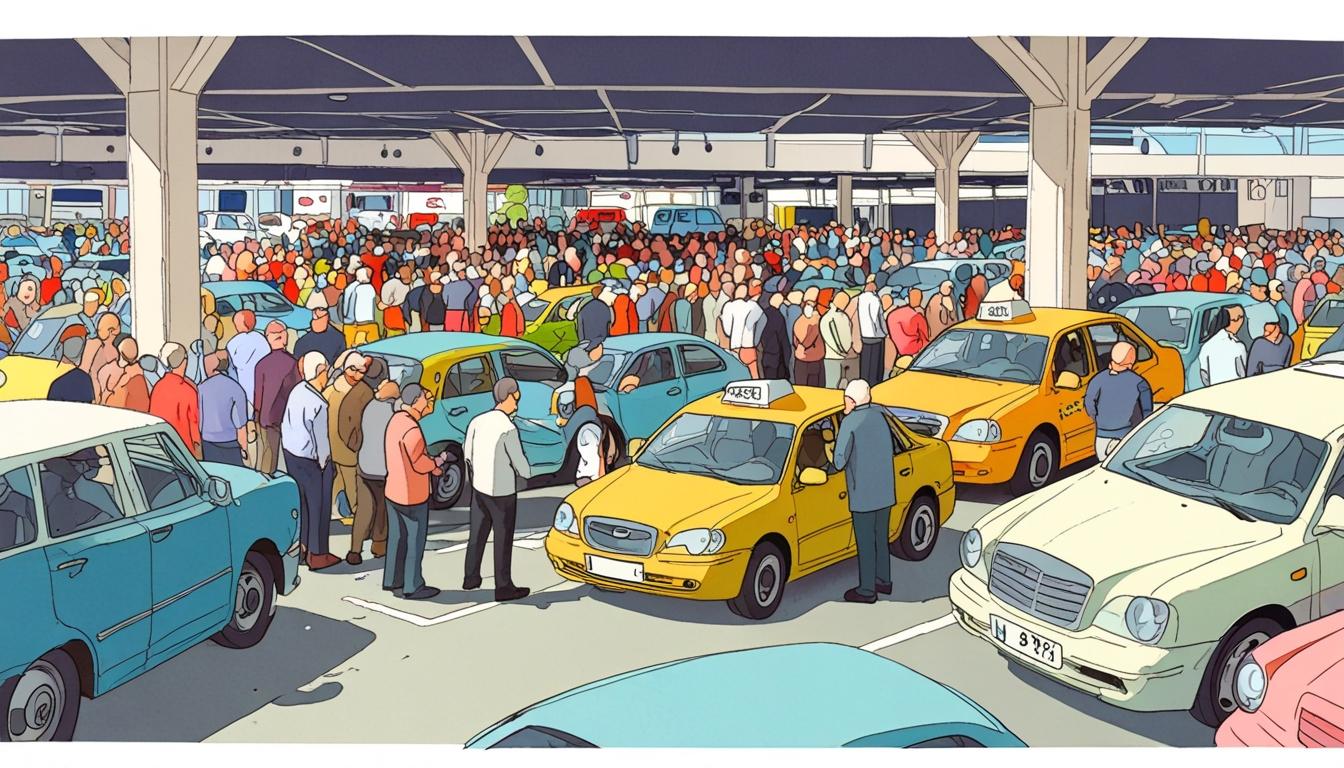The ongoing debate surrounding the relocation of the taxi rank at Brighton Station continues to stir passions among local residents, taxi drivers, and city officials alike. Initially moved to the rear of the station in November 2019, the decision was implemented under the premise of alleviating the “traffic fumes, congestion and noise” experienced by those living in proximity to the front of the building. This change was met with approval from some councillors and residents, yet taxi drivers slammed it as “utter madness,” a sentiment echoed by Andrew Peters of the Brighton and Hove Cab Trade Association.
Peters, a seasoned taxi driver with 42 years of experience, explicitly articulated his frustrations, describing the current arrangement as a "comedy of errors resulting from poor planning." He asserted that the previous configuration allowed taxis efficient access to pick up and drop off passengers at the station forecourt, a service now rendered more complicated due to the relocation. While those advocating for the move cited concerns of congestion particularly affecting Surrey Street, questions linger over whether the benefits outweigh the significant drawbacks reported by drivers and passengers alike.
The fallout from the relocation has been multifaceted. Many drivers have raised alarms about the influx of “out-of-town” private hire cars from areas such as Chichester and Portsmouth. These vehicles have reportedly parked at the front of the station in hopes of securing jobs, intensifying competition for local taxi drivers. Peters noted that local drivers are often forced to compete not only with these external private hire vehicles but also with app-based competitors like Uber, further complicating their operational landscape.
In response to these ongoing concerns, Brighton and Hove City Council indicated openness to revisiting arrangements at the station while firmly maintaining that parking in front of the building “cannot continue.” Senior councillor Trevor Muten acknowledged the “antisocial parking of taxis” blocking both buses and pedestrians, describing the current situation as unacceptable. He affirmed the council’s willingness to actively engage with taxi operators and stakeholders like Govia Thameslink Railway (GTR) to strategise a better solution that serves all parties involved.
Prior to the rank's closure, various location options for the taxi rank had been floated, including Terminus Road and Frederick Place. Peters emphasised the necessity for an official rank at the front of the station, especially for tourists and visitors unfamiliar with navigating the new layout. This perspective hints at a growing recognition that the current setup may inadvertently disadvantage passengers, particularly those requiring accessible transport options.
The closure of the front of the station during rail replacement bus operations further complicated the situation, exacerbating the challenges faced by both taxi drivers and awaiting passengers. Indeed, increased complaints have arisen regarding longer wait times and fare hikes prompted by the new setup, compelling some drivers to seek alternative solutions, which remain unsatisfactory.
As discussions continue about potential improvements, Muten mentioned that any future arrangements would need to collaborate effectively with Network Rail and GTR, as both current and previous taxi rank locations sit on their land. He reiterated the importance of community suggestions and highlighted that the interplay between taxi drivers, bus operators, and residents must be navigated carefully to restore harmony at a vital transport hub in the city.
Meanwhile, the management of Southern, which oversees Brighton railway station, suggested that the relocation had created a safer and more navigable environment for both commuters and visitors. Southern’s representatives stated that traffic disruptions decreased significantly following the move, allowing buses to navigate freely without obstructions. They expressed willingness to consult further with both the taxi trade association and the council to refine the ongoing arrangements.
Ultimately, as the city grapples with these transport challenges, the voices advocating for the taxi rank's return to its original location remain vocal. Peters and his supporters argue that a balanced, strategic approach could integrate both local community needs and the operational realities facing taxi drivers, ensuring that Brighton Station serves as a functional and welcoming entry point for all who pass through.
Reference Map
- Paragraph 1: (1)
- Paragraph 2: (1), (2), (3)
- Paragraph 3: (1), (3), (4), (5)
- Paragraph 4: (1), (2), (6), (7)
- Paragraph 5: (1), (3), (4)
- Paragraph 6: (1), (5), (6)
- Paragraph 7: (1), (4), (6), (3)
- Paragraph 8: (1), (4), (2)
Source: Noah Wire Services
